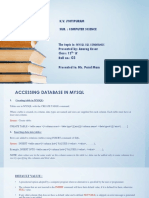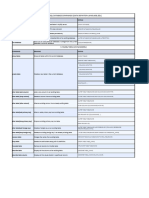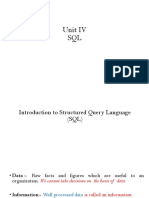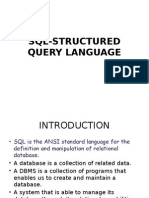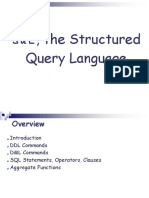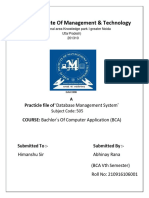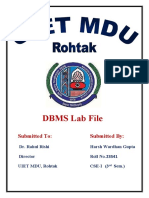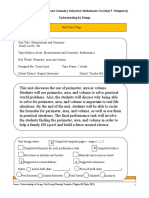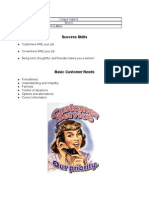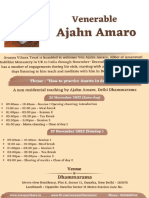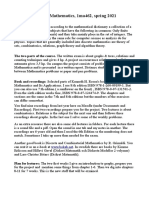0% found this document useful (0 votes)
8 views11 pagesSQL Removed
The document provides an overview of SQL commands and their classifications, including Data Definition Language (DDL), Data Manipulation Language (DML), and Transaction Control Language (TCL). It details MySQL commands for creating, accessing, and managing databases and tables, as well as executing queries using the SELECT command and aggregate functions. Additionally, it explains the concept of JOIN operations to combine records from multiple tables.
Uploaded by
Kunal VatsCopyright
© © All Rights Reserved
We take content rights seriously. If you suspect this is your content, claim it here.
Available Formats
Download as PDF, TXT or read online on Scribd
0% found this document useful (0 votes)
8 views11 pagesSQL Removed
The document provides an overview of SQL commands and their classifications, including Data Definition Language (DDL), Data Manipulation Language (DML), and Transaction Control Language (TCL). It details MySQL commands for creating, accessing, and managing databases and tables, as well as executing queries using the SELECT command and aggregate functions. Additionally, it explains the concept of JOIN operations to combine records from multiple tables.
Uploaded by
Kunal VatsCopyright
© © All Rights Reserved
We take content rights seriously. If you suspect this is your content, claim it here.
Available Formats
Download as PDF, TXT or read online on Scribd
/ 11

